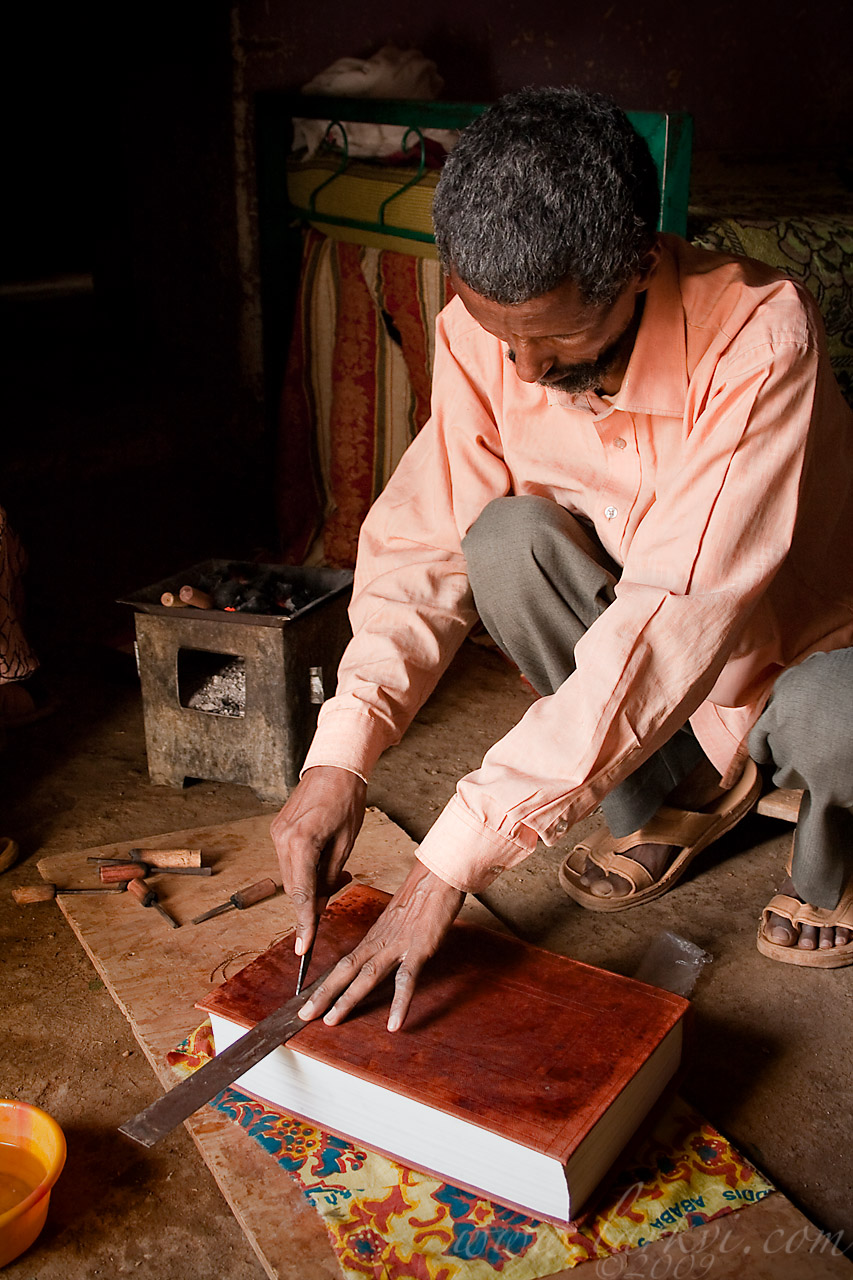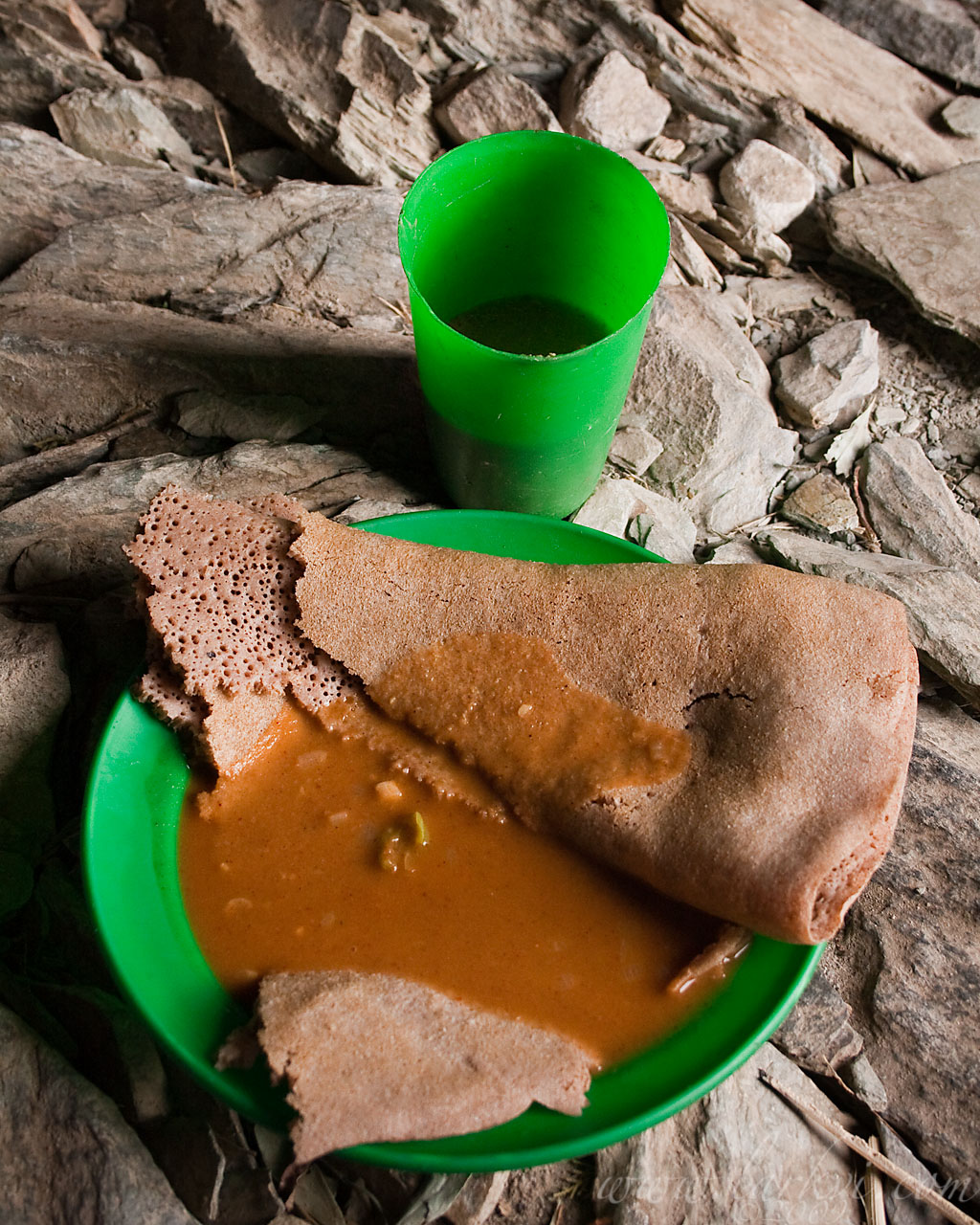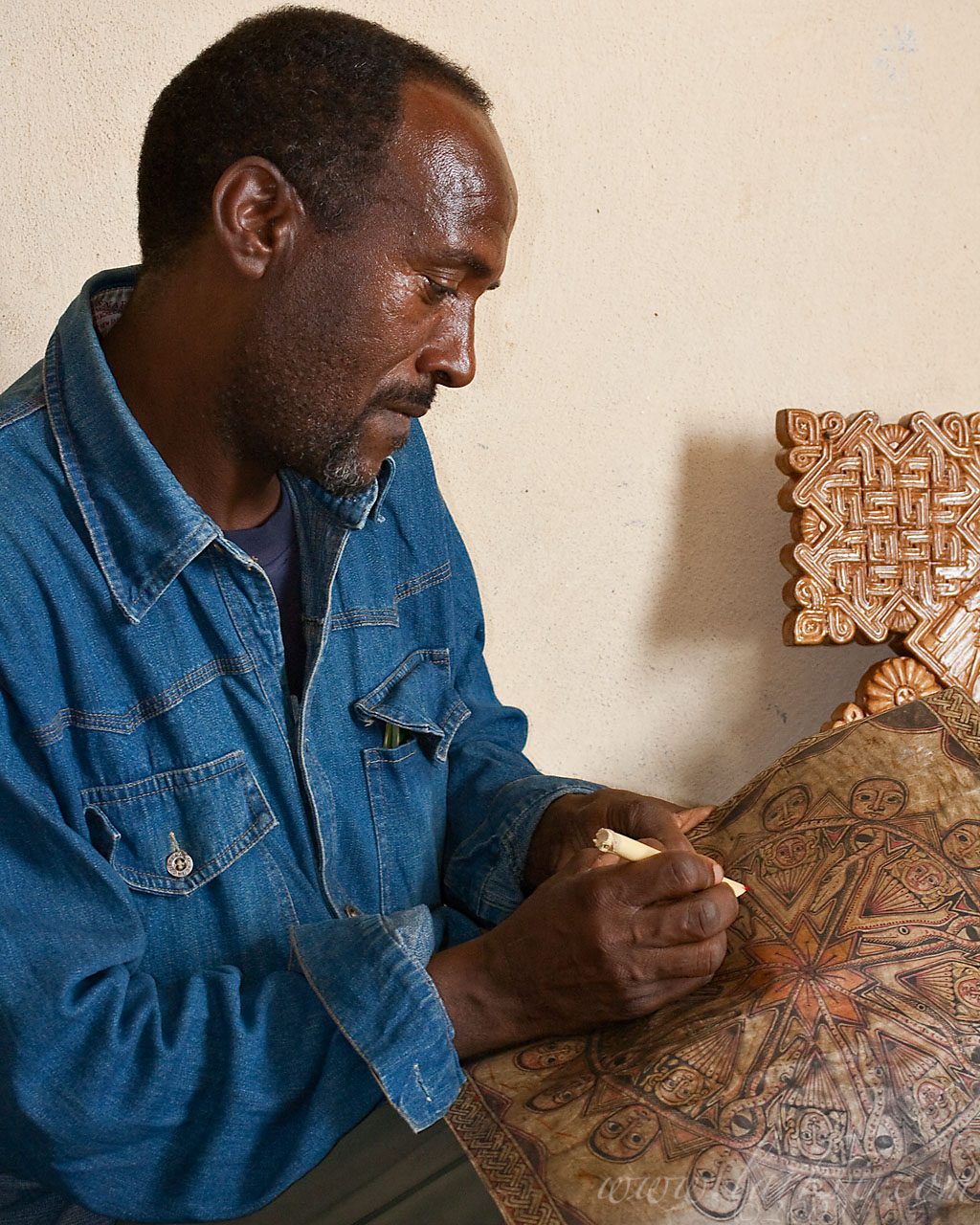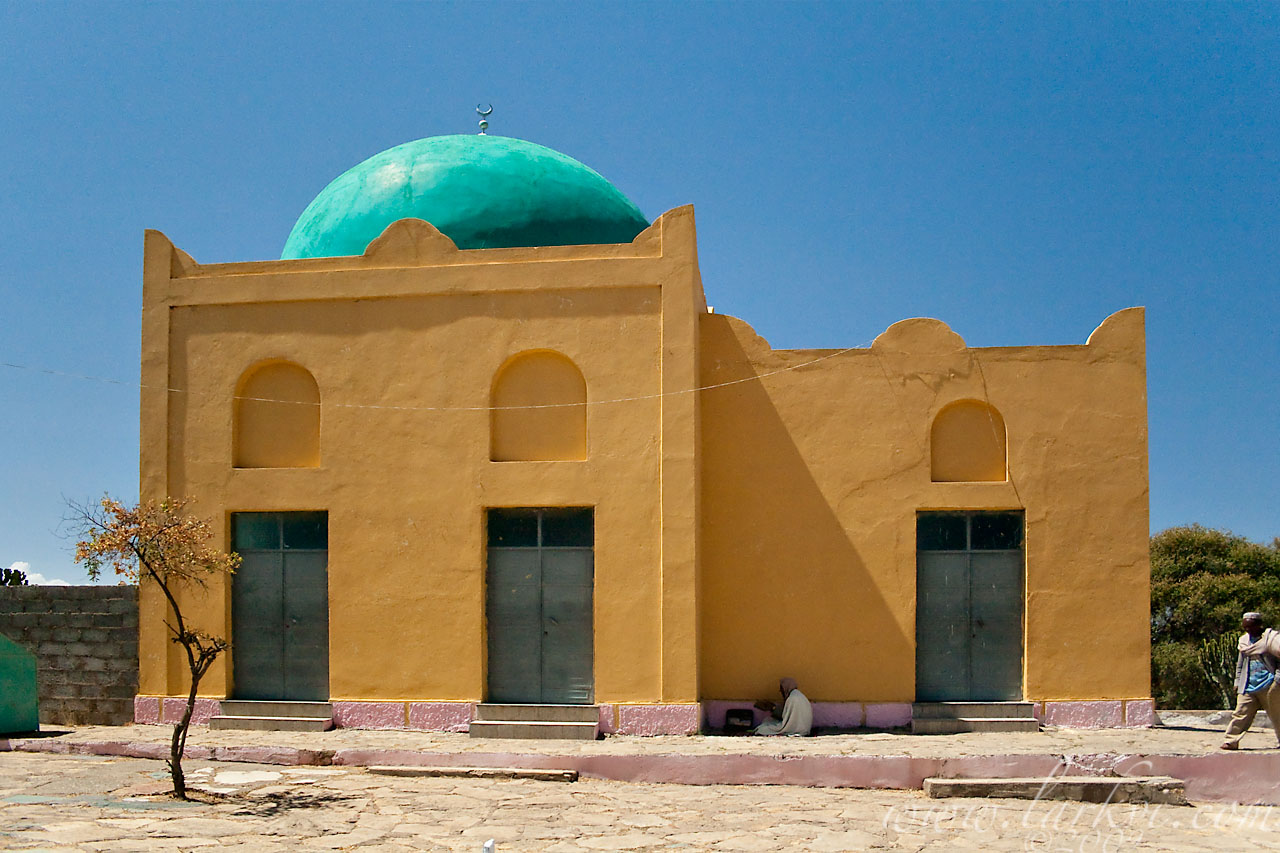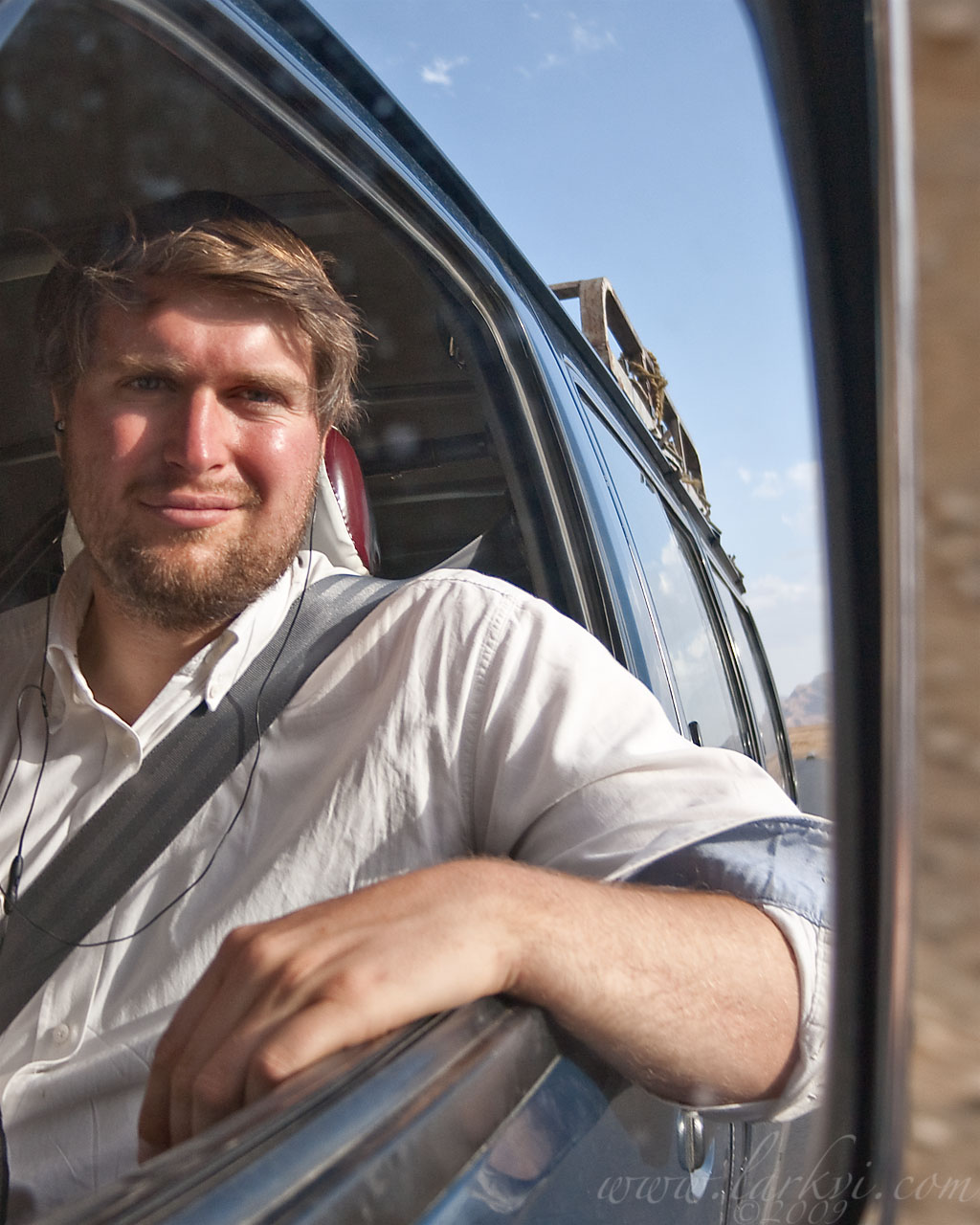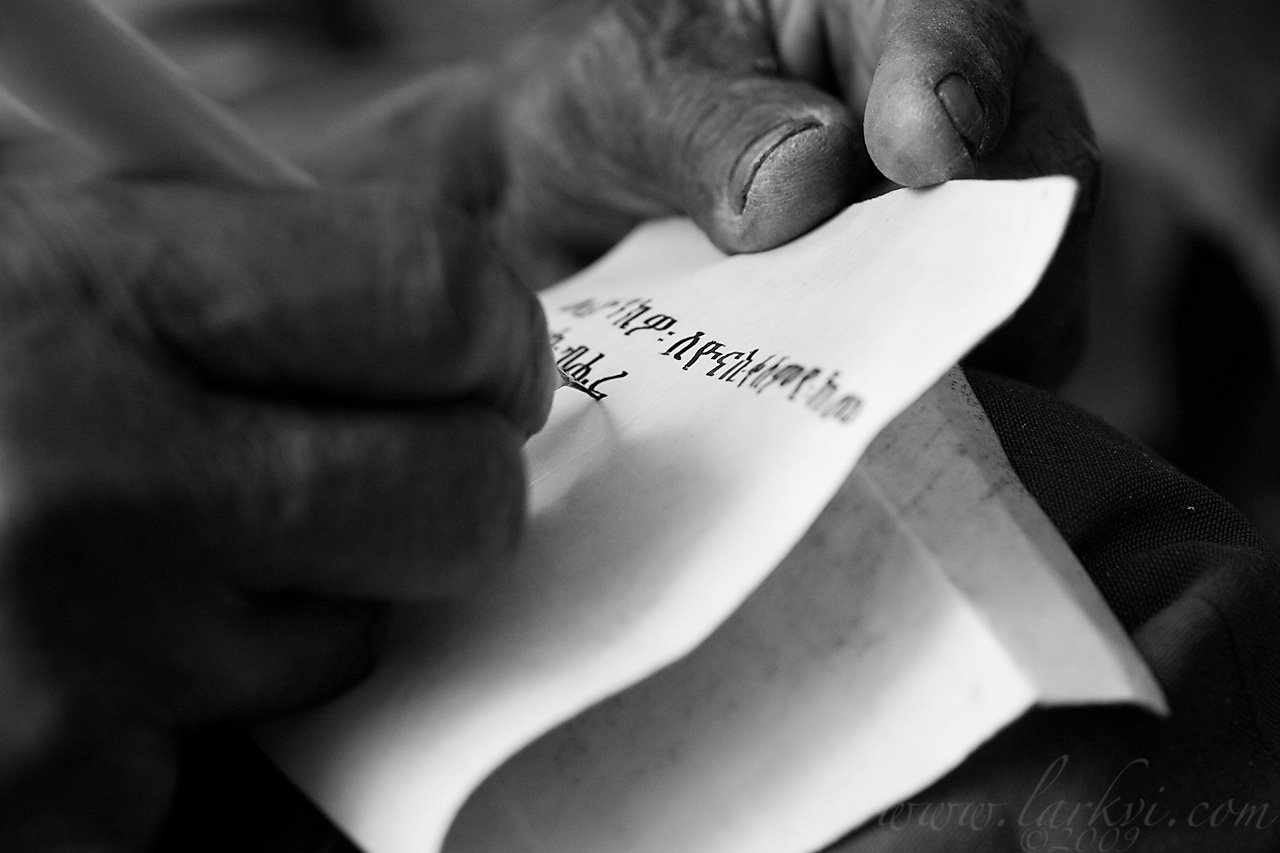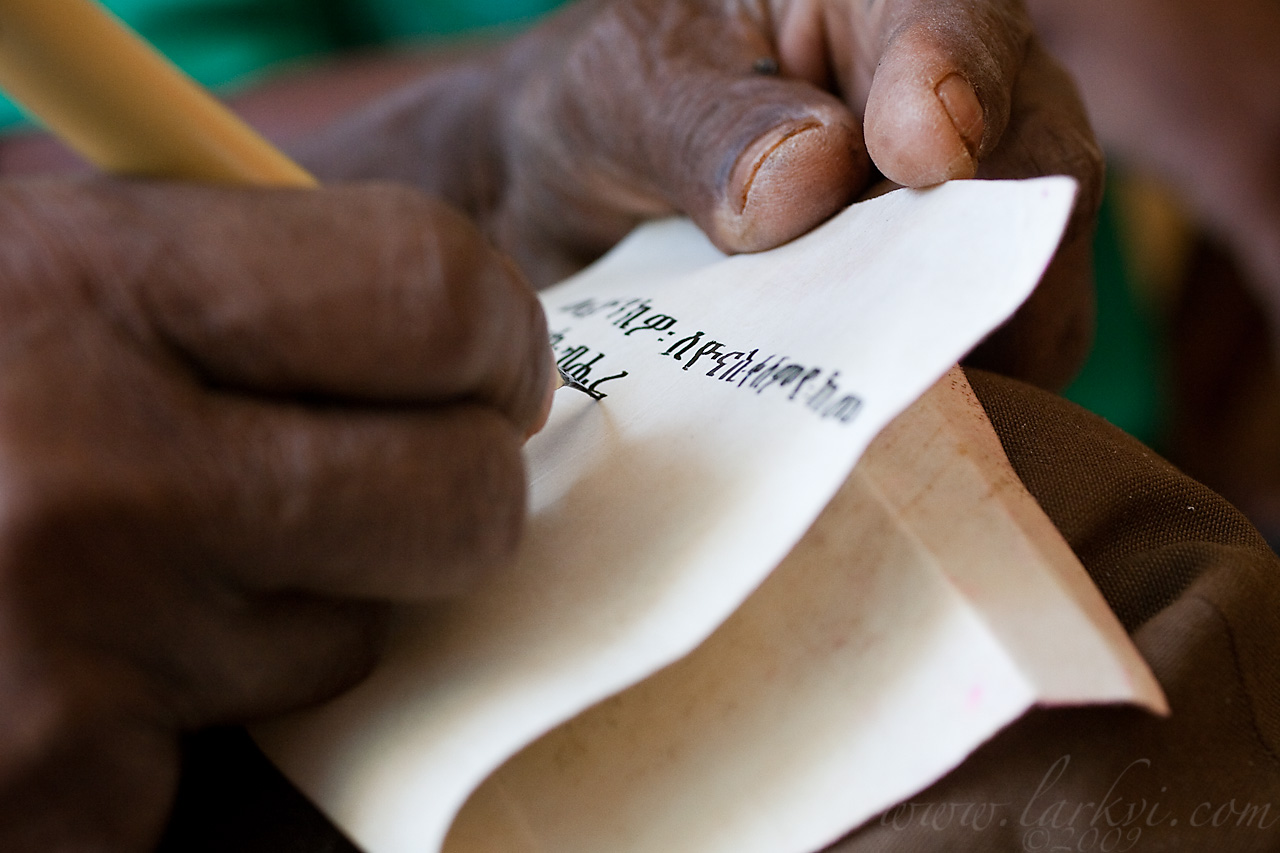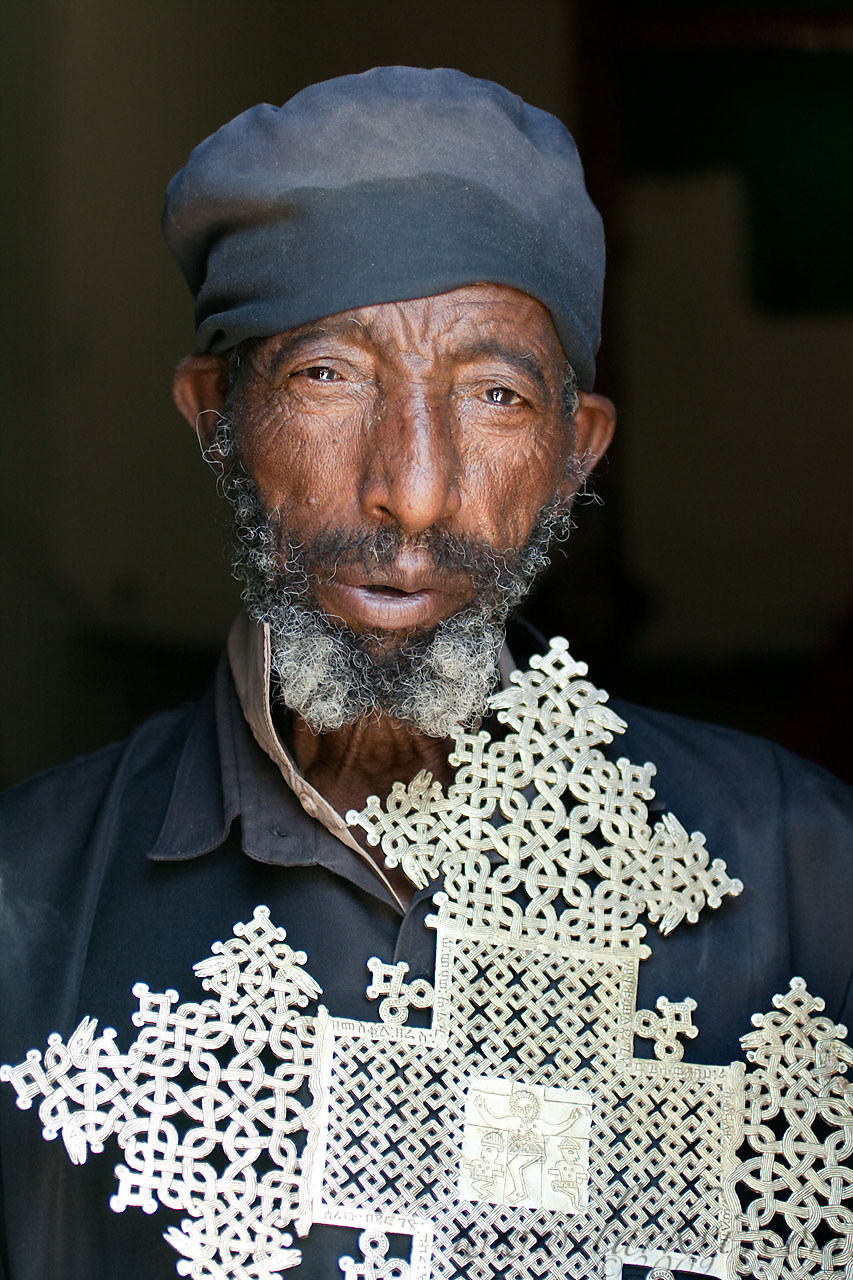Bags from various places hold legumes on display in the old market area of Mek’ele, capital of Tigray. Legumes are greatly consumed during the fasting season, and an important part of the diet year-round, as people fast on vegetables at least twice a week in the Christian parts of the country.
Tag: Tigray
Binding, Marigeta Birhanu, Mek’ele, Tigray, Ethiopia, April 2009
Bet Ammanuel Maako Panoramic (mockup), Negash, Tigray, Ethiopia, April 2009
This is my preliminary mockup of a 20-image panoramic of Bet Ammanuel Maako church and its environs, from my recent trip to Negash. I don’t have enough memory or processing power to work on the full version out here in the field, but click through to the flickr page and select “all sizes” to see a much larger image (which still only represents 10% of the full-size image).
It is not unusual to see Ethiopian churches built in highly-inaccessible places; in fact, it is considered quite appropriate. Accordingly, I walked from where I shot this over three ridges and through two valleys, to get to the hill of the church, only to find, upon my arrival, an easy road which diverged from the highway only 100M from where I had begun my laborious journey. At least the walk back was easy. . .
Fasting Meal, Bet Ammanuel Maako, Negash, Tigray, Ethiopia, April 2009
During the fasting season (which is two weeks longer than Lent in Ethiopia), monks and priests, in addition to abstaining from meat and animal products, do not eat until 9 o’clock (which we foreigners would call 3PM). I happened to be at the church just as services ended, and the priests invited me to share their fasting meal. Exhausted from the substantial hike I had taken from Negash, over three ridges and through two valleys,* I readily accepted.
What is pictured is a very typical rural meal, especially during fasting season. It consists of injera, the stable fermented pan-bread of Ethiopia, made of a grain called teff** with a ‘wot’ (stew) of shiro (chickpea paste). The drink is ‘tella,’ a small local beer made of sorghum and barley, fermented with a leaf called ‘gesho,’ which serves in place of hops.*** The injera is dipped in the shiro and eaten, with the stew serving mainly as a flavorant for the injera, which is most of the meal. More injera (and always more tella) is provided, and one is usually prevailed upon to eat much more than one wishes to. A simple and nutritious meal.
That said, I am getting rather tired of injera.
*There was, of course, an extremely moderate road to the monastery which left the main road very near to my starting place, but which I could not see when I ventured to walk to the church, which is on an imposing height, standing out from the neighboring valleys.
**Almost unique to Ethiopia, teff is a cereal grain very high in both protein and iron. The tiny seeds are easily beaten off the stalk by rain, which contributes somewhat to Ethiopia’s prone-ness to famine (a larger factor is the gross overpopulation of the country, which has grown over 120% since 1960.)
***But is nowhere near as good. One foreigner describes tella as ‘looking like muddy lake-water and tasting much the same.’ That said, this tella was significantly better, though rather full of detritus.
Keshi Mengistu Eyesus, Mek’ele, Tigray, April 2009
Keshi Mengistu Eyesu is a woodworker, scribe, and painter working in Mek’ele. He is a consummate artist, and, though he focuses on woodworking (more profitable) now, his scribal works are excellent. Though he produces them with an ink wash, to "antique" them, they need no selling as antiques, as they are excellent modern examples of traditional Ethiopian art (I’m thinking of buying one myself). Here you can see him finishing off a healing scroll with red detailing, while a carved wooden processional cross of his production sits in the background.
Magic scrolls exist in a continuum with church scrolls in Ethiopian Christianity. As in many societies with low literacy rates, writing is associated with the ability to perform magic. In a Christian society like Ethiopia, this is doubly so, as people are familiar with the magical/miraculous abilities granted to the priesthood through the recitation of written documents of the Church. The learned liturgical specialists of the Church, däbtäras, are also suspected as magicians–the word for magician is däbtära–because they have access to knowledge which is secret, both because it requires literacy, and because it is actually secret. Church scrolls, containing prayers invoking the names of angels, Jesus, and the BVM transition into magic scrolls when, in order to grant additional power or a different kind of power, the secret names of devils, demons, and magical entities are used. Apparently, some of these names are written invisibly in a process that I was poorly able to understand, though I am working on it. In addition to scrolls, Ethiopians keep alive a tradition of amulets, both those familiar from Orthodox Judaism, containing biblical passages, and those of a less religious and more magical nature.
Mosque, Negash, Tigray, Ethiopia, April 2009
The mosque in Negash, by tradition burial site of several followers of Mohammed of the 116 (including his daughter and two of his wives-to-be) who, during his lifetime, fled to the Ethiopian kingdom to escape persecution in Mecca. They were received and sheltered by Negus Asihima** of Ethiopia, who was friendly with Mohammed during his lifetime. This hospitality is the basis for the Hadith*** exempting Ethiopia from Djihad,**** ‘so long as [the Ethiopians] leave [Moslems] alone.’ The mosque is also known as the ‘Tomb of Seid Ahmed al Negash,’ after the king, who allegedly converted to Islam and was buried there.***** Ethiopian Moslems consider Negash the most important site of worship after Mecca, though it seems to be little-regarded by those outside the country. The current mosque may be a medieval construction, built on the site of a 7th-century original, but the head of the local Heritage Preservation department has expressed doubts regarding the authenticity of the 7th-century construction, since it is unlikely that Christian Ethiopia would allow a mosque to be built over their (Christian) king’s grave and in light of the miniscule presence of Moslems in the area.
This photo has been corrected for perspective distortion.
* Ethiopian word for king. The name of the village, Negash, is from the Arabic form, Nejashi.
** Accounts of the name vary.
*** A report of a saying of the Prophet, the second level of Islamic tradition informing law, after the Qu’ran.
**** Djihad is the only form of warfare permissible under Islamic law; when the conditions are met, there is a religious obligation to carry out that war. Ethiopia, though part of the ‘Land of War’ (non-Moslem lands which are obliged to be converted, preferably by peaceful means, but, failing that, by conquest–as opposed to the ‘Land of Islam,’ where Islamic governments and established Islamic religion hold sway) is an (intermittent) exception.
***** The king was a Christian monarch and likely buried in Wukro, 10km away. Only later Moslem accounts claim that the Negus converted to Islam and was deposed for it. While certainly false, such reports have formed the basis for declaration of Djihad against the Ethiopians, since religious persecution (of Moslems–others do not count) is always cause for the waging of Djihad. Acts of past (Ethiopian Orthodox) and current (allied with the same) governments could similarly be seen as persecution by those looking for a justification for war, as Somalia’s Islamic Courts Union found (incidentally, the U. S. Dept. of State agrees–regarding persecution, not the war).
Ten Days into the Research Trip, Tigray, Ethiopia, April 2009
Me, sun-burned from a day-trip to Negash and ten days in the harsh Tigrinyan sun, heading back to Mek’ele at the end of the day.
I visited the Negashi mosque and the Bet Ammanuel Maakos (Markos? It’s what the sign says.) Church, which I shall post photos of soon. The headphones are for my iPod, which allows me to listen to iTunesU courses and the Best of CBC Radio’s Ideas podcasts which I downloaded when I still had fast internet. If you are traveling (or even if you aren’t)–I highly recommend both as a great way to pass large blocks of time while educating oneself.
Writing (B&W), Marigeta Haile Selassie, Mek’ele, Tigray, Ethiopia, March 2009
Writing, Marigeta Haile Selassie, Mek’ele, Tigray, Ethiopia, March 2009
I normally do not publish photos from my research work, but I have decided to try making them a little more artistic, and will attempt to get some good ones up here.
In this one, Marigeta* Haile Selassie, writing out a short phrase as a demonstration of pen-technique. Notice that he holds the pen at nearly a 90-degree angle from the page, a position dictated by the nearly-90-degree cut he made of the nib, with a slight angle to allow right-handed writing. He is working on his knee, sitting on a small stool in the corner of his shop, next to the window. The pen is made out of bamboo, two species of which are native to Ethiopia.
*The title, which basically translates as ‘Master,’ refers to having completed a certain level of traditional Church education–‘temhert’–the focus of which is the memorization of Church books. The level above it would be ‘Memhir,’ which means ‘traditional church teacher.’
Abba Mäsälä, Debrä Genet Medhane Alem, Mek’ele, Tigray, Ethiopia, March 2009
I am in Mek’ele, the capital of Tigray, the Northern province of Ethiopia, interviewing scribes and other manuscript craftsmen. I took the opportunity to visit the treasury of Debrä Genet Medhane Alem monastery, which has a number of deluxe manuscripts presented by Atse (Emperor) Yohannes IV, who brought Mek’ele to prominence by establishing it as his capital (Ethiopia’s capital has changed a number of times). Abba Mäsälä is the treasurer of the monastery, and when he was putting away the books, I asked if I could take a photo of him. He ran upstairs to the treasury, to get his favorite processional cross, before he was ready to pose for a couple quick photos.


